Basic Signal operations
advertisement
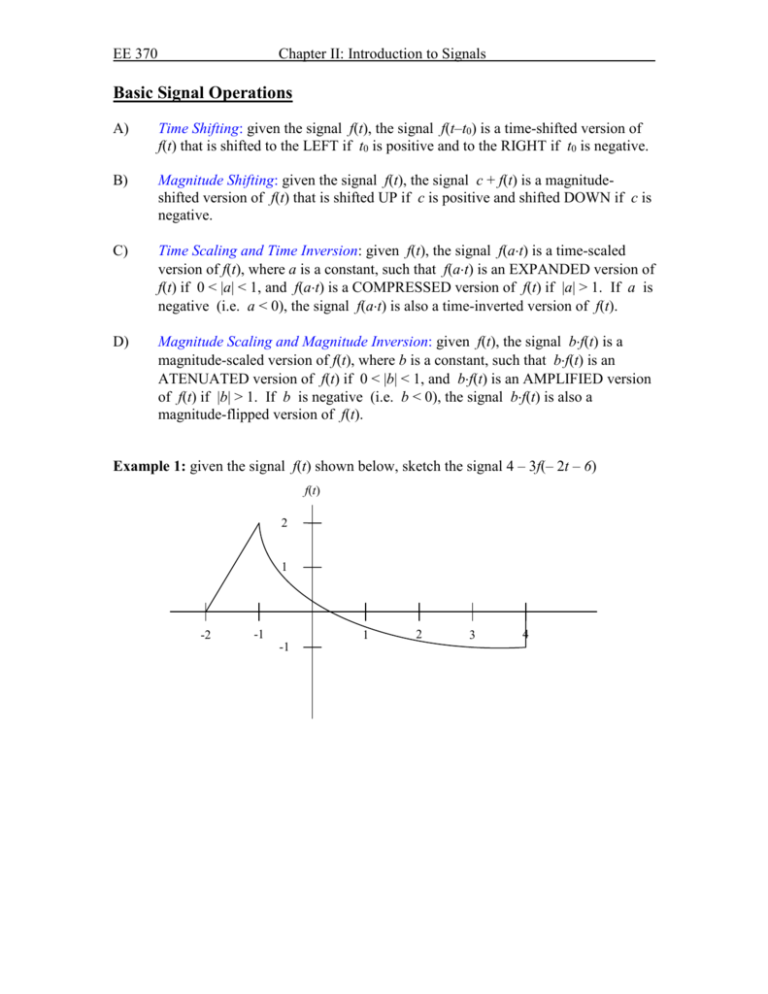
EE 370 Chapter II: Introduction to Signals Basic Signal Operations A) Time Shifting: given the signal f(t), the signal f(t–t0) is a time-shifted version of f(t) that is shifted to the LEFT if t0 is positive and to the RIGHT if t0 is negative. B) Magnitude Shifting: given the signal f(t), the signal c + f(t) is a magnitudeshifted version of f(t) that is shifted UP if c is positive and shifted DOWN if c is negative. C) Time Scaling and Time Inversion: given f(t), the signal f(at) is a time-scaled version of f(t), where a is a constant, such that f(at) is an EXPANDED version of f(t) if 0 < |a| < 1, and f(at) is a COMPRESSED version of f(t) if |a| > 1. If a is negative (i.e. a < 0), the signal f(at) is also a time-inverted version of f(t). D) Magnitude Scaling and Magnitude Inversion: given f(t), the signal bf(t) is a magnitude-scaled version of f(t), where b is a constant, such that bf(t) is an ATENUATED version of f(t) if 0 < |b| < 1, and bf(t) is an AMPLIFIED version of f(t) if |b| > 1. If b is negative (i.e. b < 0), the signal bf(t) is also a magnitude-flipped version of f(t). Example 1: given the signal f(t) shown below, sketch the signal 4 – 3f(– 2t – 6) f(t) 2 1 -2 -1 1 -1 2 3 4 EE 370 Chapter II: Introduction to Signals Example 2: assume the function shown above is –3g(–t/2+1), sketch g(t). Unit Impulse Function The unit impulse function is one of the most important functions that we will be using extensively in this course. Yet, it is one of the most difficult functions to understand and use. A couple of definitions exist for the unit impulse function (t), which is sometimes also called the Dirac delta function. The following are two definitions: Graphical Definition: The rectangular pulse shape shown below approaches the unit impulse function as approaches 0 (notice that the area under the curve is always equal to 1). (t) t EE 370 Chapter II: Introduction to Signals Mathematical Definition: The unit impulse function (t) satisfies the following conditions: 1. (t) = 0 t 0, if (therefore it is non-zero only at t = 0). 2. (t )dt 1 . (so, all of the area under it is concentrated at t = 0) Properties of the Unit Impulse Function: a) Multiplication of a function by the unit impulse response: f (t ) (t t 0 ) f (t 0 ) (t t 0 ) b) Sampling of a function using the unit impulse response: f (t ) (t T )dt c) f (T ) (t T )dt f (T ) (t T )dt f (T ) Obtaining the unit step function from the unit impulse function t 0, t 0 1, t 0 ( )d u (t ) du (t ) (t ) dt
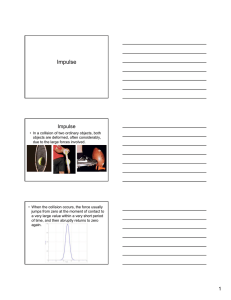
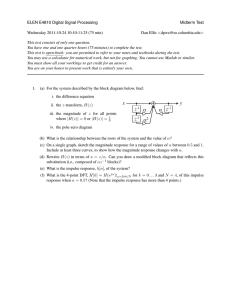
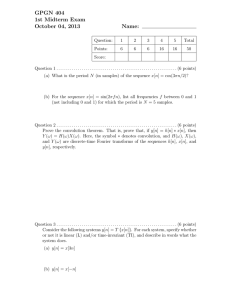


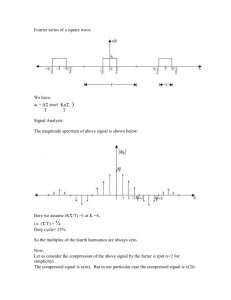

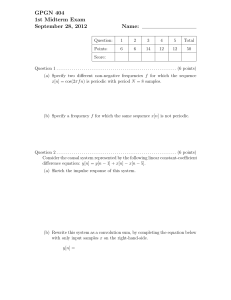
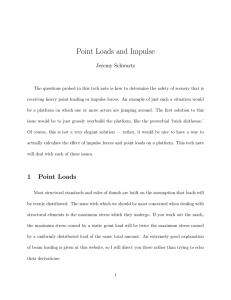
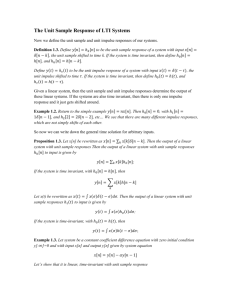
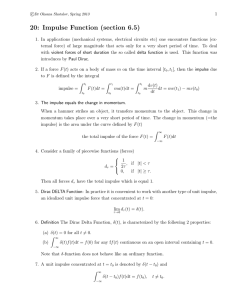
![Solution to ECE 315 Test #4 F03 [ ] [ ]](http://s2.studylib.net/store/data/011925518_1-bdf3d19a33479d9f18f290ecbd440cbd-300x300.png)